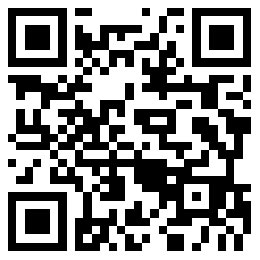博世:2020年自動(dòng)駕駛汽車應(yīng)可上高速公路

|
????德國(guó)工業(yè)巨頭博世集團(tuán)稱,,只要監(jiān)管能跟上技術(shù)前進(jìn)的步伐,自動(dòng)駕駛汽車只需五年就應(yīng)該能開(kāi)上高速公路,。 ????博世的看法和特斯拉汽車首席執(zhí)行官埃隆?穆斯克不謀而合,。穆斯克預(yù)計(jì),2020年前后汽車全自動(dòng)行駛技術(shù)就會(huì)成熟,,屆時(shí)汽車將不再需要駕駛者的操控,。 ????對(duì)博世來(lái)說(shuō),這應(yīng)當(dāng)意味著向駕駛輔助系統(tǒng)和高級(jí)自動(dòng)駕駛產(chǎn)品的開(kāi)發(fā)投入更多資金,,并由此獲得更高的收入,。從2011年開(kāi)始,博世的工程師一直在加利福尼亞州帕羅奧圖和德國(guó)阿布施塔特從事這方面的工作,。機(jī)動(dòng)車部門(mén)是博世在北美的最大業(yè)務(wù)部門(mén),,為汽車、非公路用車,、兩輪機(jī)動(dòng)車,、航運(yùn)和鐵路運(yùn)輸提供技術(shù)。 ????預(yù)剎車和車道偏離警告等駕駛輔助系統(tǒng)的蓬勃發(fā)展正在推動(dòng)汽車行業(yè)邁向自動(dòng)駕駛時(shí)代,。舉例來(lái)說(shuō),,據(jù)博世管理委員會(huì)成員德克·霍海森博士介紹,該公司駕駛輔助產(chǎn)品的銷售額正以每年三分之一的速度上升,,預(yù)計(jì)這個(gè)領(lǐng)域的銷售額到2016年將突破10億歐元(約10.9億美元),。 ????本月早些時(shí)候博世公布,2014年該公司機(jī)動(dòng)車業(yè)務(wù)北美地區(qū)銷售額增長(zhǎng)近10%,,達(dá)到80億美元,。該業(yè)務(wù)的客戶包括谷歌、特斯拉汽車和保時(shí)捷,。博世北美地區(qū)并表總銷售額為113億美元,,機(jī)動(dòng)車業(yè)務(wù)占70%以上。 ????為滿足需求,,博世又聘用了數(shù)百名工程師來(lái)研究駕駛輔助技術(shù),。目前為博世改良駕駛輔助系統(tǒng)的工程師約有2000名,,在短短兩年時(shí)間里增加了整整700人。 ????如果各國(guó)的法律框架沒(méi)能和技術(shù)實(shí)現(xiàn)同步,,自動(dòng)駕駛汽車的發(fā)展就可能陷入停滯,,至少可能變慢。高度自動(dòng)化的駕駛系統(tǒng)可以處理任何具體情況,,駕駛?cè)藙t可隨時(shí)獲得車輛控制權(quán),。但按照聯(lián)合國(guó)1968年《道路交通公約》的規(guī)定,開(kāi)車時(shí)使用這種系統(tǒng)在許多國(guó)家都不合法,。 ????在美國(guó),,自動(dòng)駕駛車輛屬于合法事物,因?yàn)槊绹?guó)法律從未認(rèn)定它們違法,。但最終,,聯(lián)邦法規(guī)的缺失將成為一個(gè)障礙。隨著谷歌,、奧迪,、戴姆勒和特斯拉等公司開(kāi)始測(cè)試自動(dòng)駕駛技術(shù),一些州已經(jīng)自行出臺(tái)了規(guī)定,。如果博世的預(yù)言成真,,自動(dòng)駕駛汽車恐怕首先不得不穿越各州各國(guó)的規(guī)章制度交織而成的大網(wǎng),而不是在統(tǒng)一的指導(dǎo)原則下迅速起步,。(財(cái)富中文網(wǎng)) ????譯者:Charlie ????校對(duì):詹妮 |
????In just five years, cars should be driving themselves on the freeway, as long as regulations can keep up with the advancing technology, according to German-industrial conglomerate Robert Bosch Group. ????The forecast is in line with Tesla Motors CEO Elon Musk’s prediction that the technology for fully autonomous cars—those that require no driver supervision—will be ready by about 2020. ????For Bosch, this should mean deeper investment—and greater revenues—in driver assistance systems, as well as development of advanced automated driving products, something its engineers have been working on since 2011 at locations in Palo Alto, California and Abstatt, Germany. The company’s mobility unit—by far its largest business sector in North America—provides technology for automobiles, as well as off-highway applications, two-wheelers, shipping, and rail transportation. ????The boom in driver assistance systems, such as predictive emergency braking and lane departure warnings, is propelling the industry towards automated driving. For instance, Bosch’s sales in driver assistance systems is already increasing by a third every year, according to Dr. Dirk Hoheisel, a member of Bosch’s board of management. Sales in this field are expected to exceed 1 billion euros (about $1.09 billion) in 2016, Hoheisel says. ????Earlier this month, Bosch reported that its mobility business unit—which has a customer list that includes Google, Tesla Motors, and Porsche—saw sales in North America grow nearly 10% to $8 billion in 2014. The mobility unit accounted for more than 70% of the $11.3 billion in total consolidated sales in the region. ????Bosch has responded to demand by hiring hundreds of engineers to work on driver assistance tech. About 2,000 engineers are working on refining driver assistance systems at Bosch. That’s a good 700 more than just two years ago. ????The progress toward self-driving cars could stall—or at least slow—if countries don’t create a legal framework at the pace of technological development. In many countries, highly automated driving—in which the system can handle all situations in a defined case, but the driver is ready to take the controls—isn’t legal thanks to rules outlined in the Vienna Convention on Road Traffic of 1968. ????In the U.S., self driving cars are legal because they’ve never been outlawed. Eventually, the lack of federal rules will become an obstacle. It’s already prompted some states to come up with their own rules as companies including Google, Audi, Daimler and Tesla test automated driving tech. If Bosch’s prediction is going to come true, automated cars may first have to navigate a tangled web of state-by-state and country-by-country regulations, rather than swiftly take off under unified guidelines. |
-
熱讀文章
-
熱門(mén)視頻











